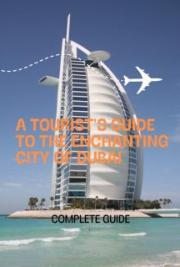Chapter 14
Tenghiz
After leaving the company of trucks in 1997, where I have been
working for more than nine years I got an offer to take a back-to-
back job abroad. I was to work four weeks in one last and be at
home for another four weeks. I accepted it.
The place has been in Kazakhstan, not far from the northern
end of the Caspian Sea. It was an oil-mining site in use for about 10
years, but some difficulties made exploitation only even, without
profit. The camps, where the several thousand people of the crew
has been housed, as well as the working places, had been built by
our compatriots in an agreement with the then Soviet government.
In 1994 Chevron has overtaken the enterprise from the once Soviet,
then Kazakh state company. A new joint venture has been estab-
lished with the name of Tenghizchevroil.
The place Tenghiz itself is a terrible location. Some decades
ago it has been part of the Caspian Sea, but overuse of water of
rivers supplying the Caspian caused the level of the isolated salt-
water body to decrease. As a former sea-bottom, it is as level as
anything can be. Soil is a fine mixture of sand with salty mud.
Precipitation is almost nothing, wind is never absent. The fine dust
finds its way to eyes, lungs, everywhere. After my first month I left
with the determ-ination to finish that employment as soon as
possible.
My assignment on paper has been supervisor and chief mech-
anic of the personal car repair workshop. The person invited in the
ad for job had to speak English and Russian on a high level, be an
engineer of the automotive or electrical field and have some exper-
iences in the repair of cars. From CVs of several applicants mine
has been selected by the Head of Transport Department, Michael
333
Canned roaddust
After my arrival he was the boss who received and informed me
about my would-be tasks. My direct boss, head of the two repair
workshops for buses and cars, Michael G. -- Mike 2 --, has been on
his normal monthly one-week leave. Mike 1 said I was to take into
my hands the supervision of car repair workshops, both for Soviet-
built and American, Japanese and German cars and pickup trucks.
My compatriot, one of the back-to-back supervisors for the bus
workshop, has been present at the conversation, but he soon
seemed to have heard something different there.
Mike 2 thought it otherwise. As the conditions for the invitation of
my place have not been determined by him, he has not been too
keen to accept anybody found on them. In a short time he decided
not to accept me, but he had the manner not to stop my working
there, he even let me go back after my first month-off. Alas, he has
not been intelligent enough in his way to inform the representative
of my host company. Also, he let intrigue do its work. On one hand
he asked for another one in my place with the excuse, he had not
been looking for a scientific assistant but a mechanic. On the other
hand he disclosed his decision to my back-to-back, who was trying
to displace me by his friend from home (he could not manage to do
this as Mike 2 was of different mind).
Simultaneously, Mike 2 launched a different search for some-
one to my place and found his man in someone, who had been fired
from the same place in the previous year. By this action he made
reliability troubles to my host company with their new candidate,
who left his employee in the belief that his place was secure.
All in all, I left that job with only a letter of recommendation to
anyone whom it may concern.
Anyway for me, as usual, this place has not been an all negative
one either. Although I wouldn't be keen to select it for my home my
eyes saw natural wonders also there. Once I forced myself to spend
my precious little leisure time (during my month in service the daily
working time came up to 12 hours from Mondays to Saturdays, on
Sundays they were 6 hours only, this way in one month we could
334
Tenghiz
perform double time and the next month we could spend at home)
on the participation in a free excursion by bus that was organised
every Sunday to the sea. Others on the bus were mainly American
employees, their majority young technical professionals, who came
to Kazakhstan more for the sake of adventure than for money,
although their pay was higher than mine by about one order of
magnitude. At the sea we had two hours time for free occupation
that I used for photography and a very short dip in the water as,
being October it wasn't ideal for swimming. During the homeward
trip the program was singing, American popular songs were
repeated endlessly. It was a very instructive excursion.
Nature is hard to be beaten, even in civilised circumstances. In
the vast repair hall a lot of frogs moved around, even the only
endemic creature of Tenghiz could be met. It is the jerboa (in
Hungarian jumping mouse), I mostly saw them in the mouth of the
local cat on route as food for the kittens. It is rather an under-
statement to call them mice, their size is equal to that of a rat.
So much I can tell you with good conscience. I hope, there were
some among my Readers that could keep up so long. The proverb-
ial advertisement should sit here, he who reached this line can go to
a given place and ask for his mug of beer. I hope, if I had written it
here I would be bankrupt financially. Thanks for your patience.
The End
335
CANNED
ROADDUST
PICTURES
337

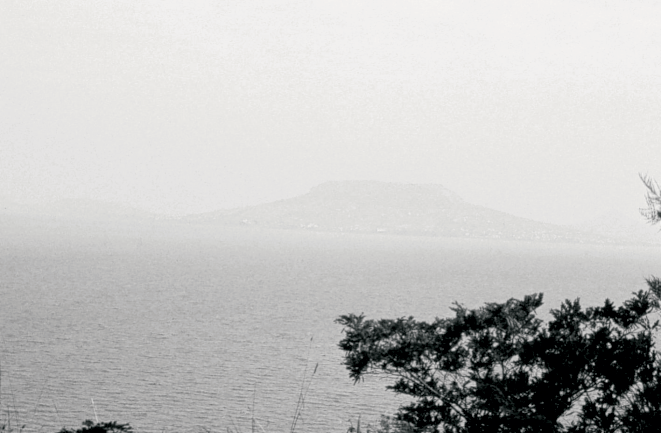
Canned roaddust
The environment of the Lillafüred Lake provides program for a good couple of hours beside visiting the three caves in the neighbourhood.
What a fine panorama! The extinct volcanoes in a straight line. Best of all is Badacsony.
338
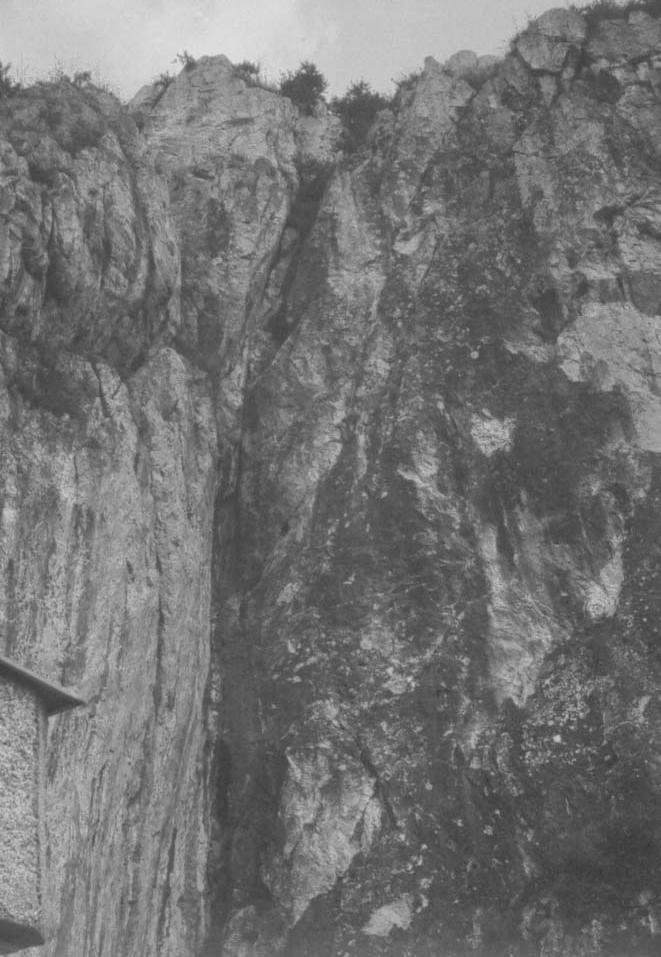
Home landscape
The Aggtelek dripstone cave opens at the foot of a precipitous wall of cliffs.
The cave itself is a sight not to be characterised in short.
All had better see it themselves.
339
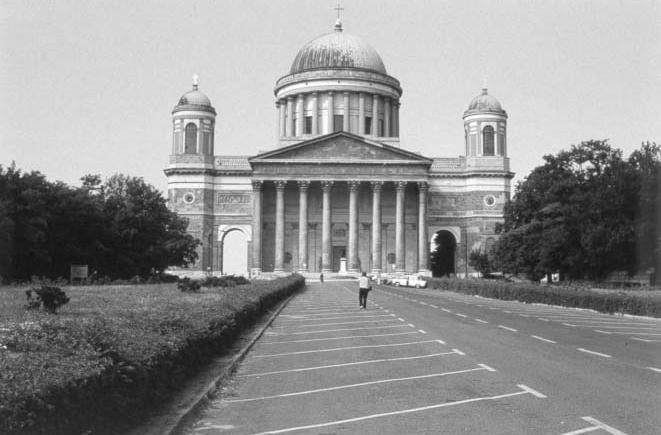

Canned roaddust
The two target ports for the old steamboats have been Visegrád and Esztergom, where they sailed daily. For me the Esztergom basilica was a sight not to forget.
The sight of the Danube Bend from the Pilis hills near the Búbánat valley.
340

Home landscape
The xeranthemum flowers -- called in Hungarian "straw flower" -- collected in the Pilis (that time it has not been protected yet) decorated our apartment for years.
341
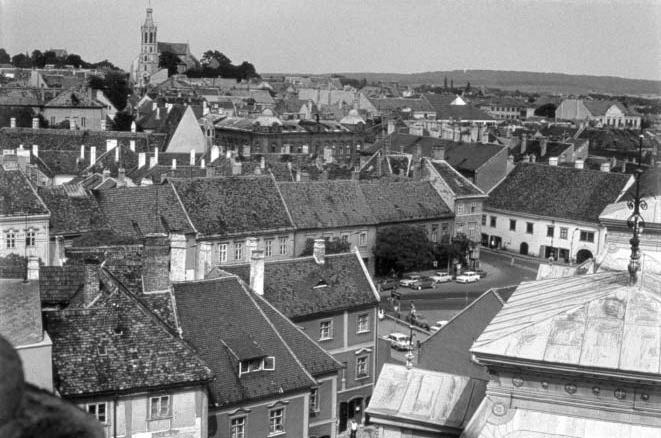
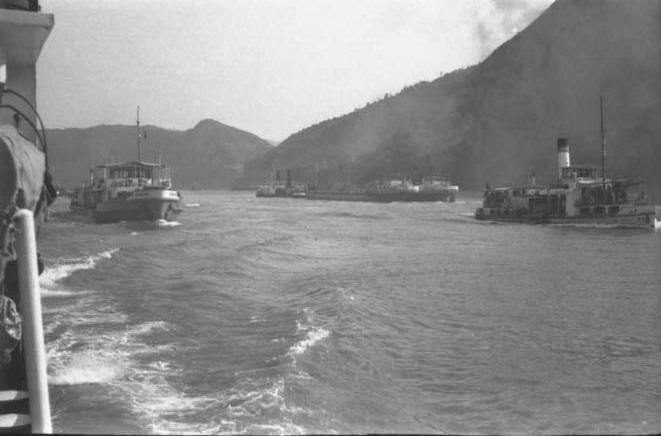
Canned roaddust
Sopron was the Hungarian town that I have known only from stories and books for several decades.
I can consider myself lucky to have had the opportunity to see the cataracts of the Danube in their original state. Now they are closed in a concrete frame and most of them is under many feet of calm water. Entry to this stretch of river in a downwards trip has been at Moldova Veche (Old Moldova).
342
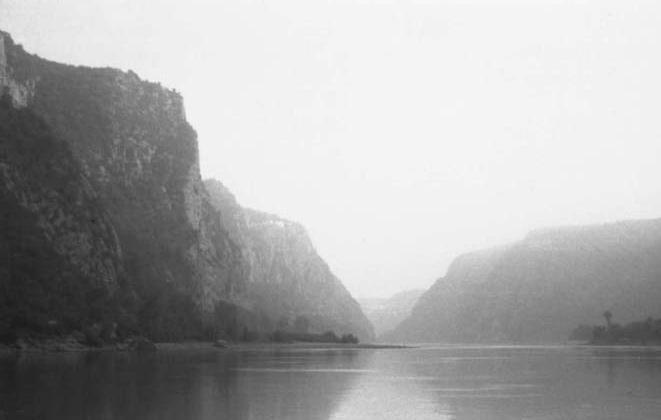
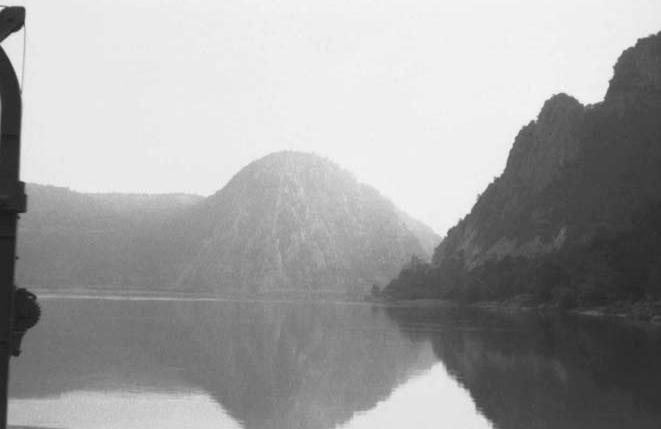
Danube
The two Kazan Straits have the most majestic view on the Danube. The river is pushed inside a very narrow basin. On both sides the cliffs are rising upwards, from the water to the top, perpendicularly. The width of the river at places is less than 300 feet. The two straits have a length of two and a half miles each.
343
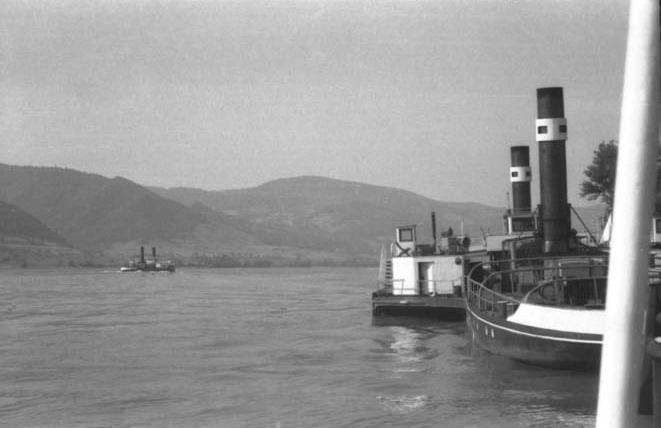
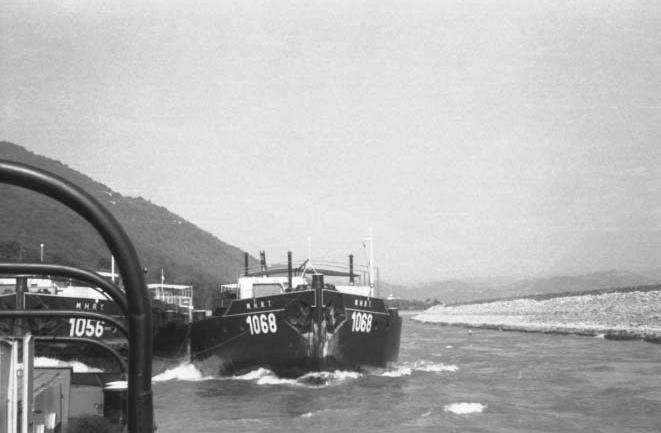
Canned roaddust
The barges were taken to the Dalboka anchoring place and we turned back for the rest. Dalboka was the anchoring of Orsova, the second one of the three hard stretches of the Cataracts had its end here. Orsova had several Hungarian residents even at the time when I visited it. But before that time by some decades it was a typical Hungarian town.
Now it was time to slip our barges through the last and most dangerous section.
It was the Iron Gate. On the left side the high mountains reached to the riverbank, the other side had a plain about half a mile wide and behind it rose the mountains.
The Sip canal along the right shore has been called simply Iron Gate canal, it came into being at the river's regulation by being blasted free at the bottom, then pushed behind a levee built parallel to the shore.
344
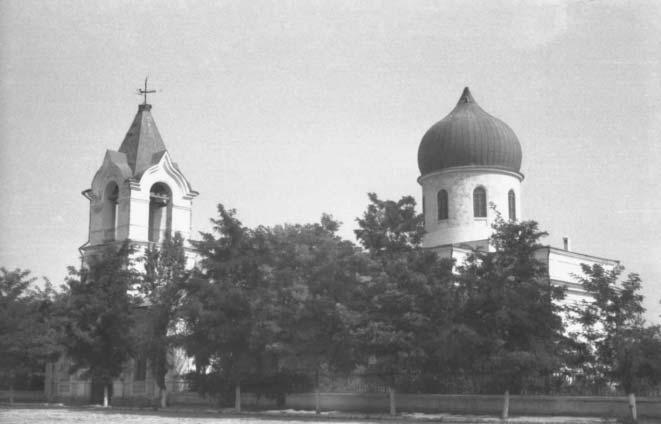

Danube
Where we were heading it was Reni, a small town, but a big river-side reloading place within the Soviet Socialist Republic of Moldova that time. Later there was a swap of territories between Moldova and Ukraine, Moldova got the Pridnestrovia
-- a hot spot lately because of Russian troops relocatedthere from Afganistan --
and Ukraine took all the lands on the Danube and the Black Sea
for national security reasons.
The large towing winch has been mounted on the boat-deck and, when down-
river, of the 600 feet of steel cable all have been sent out making the barges, submerged to their deck from load, almost invisible.
345
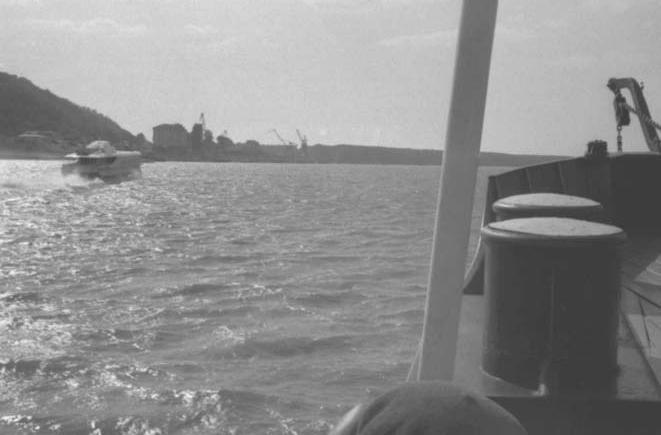
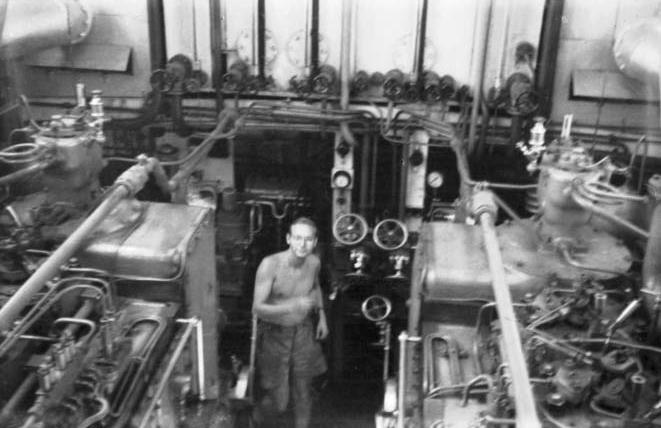
Canned roaddust
The first hydrofoil of Hungary belonging to the smaller Russian series, the
"Rocket", was called Sirály-1 (seagull) with us at home. For the ship-line MAHART two such boats were purchased. I met this one during its
being taken home.
Of all the "Esztergom" Diesel tug the machine room was the largest space with a vast volume, its height went from the bottom to the boatdeck, the highest level on board. It means it took two complete "stories". Its length took at least half of the complete length of the tug, of which the most place were taken by the two main engines.
346
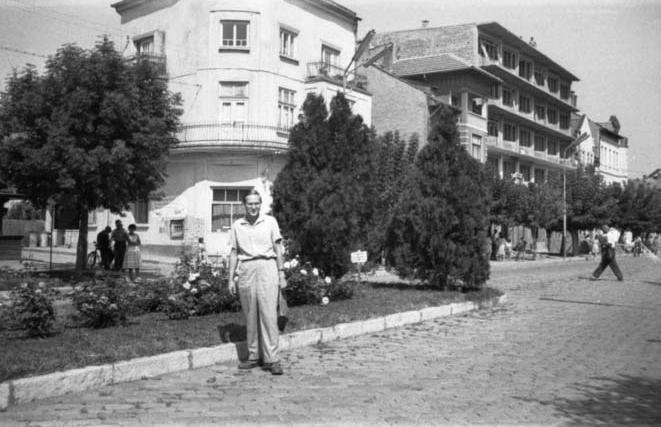

Danube
Our stock of food was going out during the backward trip, so it was needed to buy provision in a Bulgarian port, Lom. I stepped on shore too.
We met the cataract tug "Komárom" under Turnu-Severin. She was coming to help us with our barges through the Cataracts upriver.
347

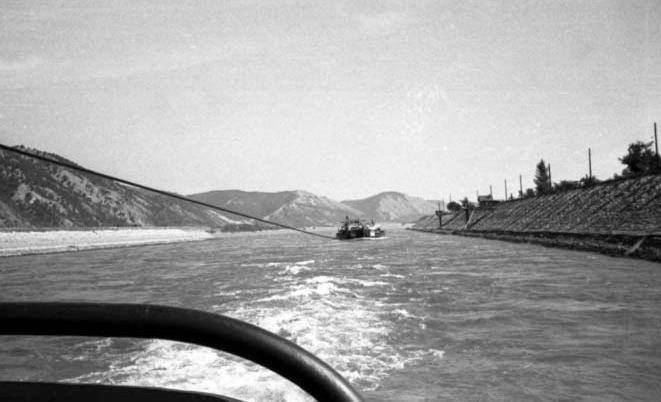
Canned roaddust
Before the Danube was regulated the shipping canal had been along the left shore. At the very edge of the riverside there was a narrow path where the horses went one-by-one pulling the boat against the flow. At the upper end of this Old-road the line had to be let free, the boat was taken by the impulse farther up and it anchored on reaching the other side of the river.
At low water-level all the water went through the canal as the cliffs on the bottom made a dam hindering the flow. The speed of the current came up as high as 16 mph during such periods.
348
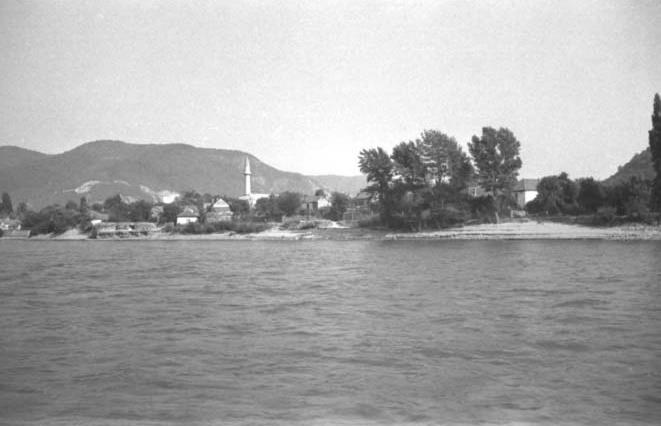

Danube
Today at Orsova you can see only the suburbs lying higher, the rest is under water because of the dam some miles down-river. It is also the fate of the former isle of Ada-Kaleh, whose minaret had been a great sight before the dam.
During the 2nd century AD. the Roman emperor Traian conquered the south part of Transsylvania being then the country of Dacia. He went along the Danube and his legions made a route on the riverbank hewn into the rock of the two Kazans above water-line. It has been called Traian's Route marked by the TraianTablet.
Now only skin-divers can see what we saw pass by from the board of our boat.
349


Canned roaddust
The ruin of Galambóc, a border fortress during the reign of King Matthew, where the king had an affair with Turks (alas, he wasn't very tough with them, otherwise they would not have dared to come to our country in 1526).
The Széchenyi Tablet at the uppermost end of the Cataracts paying honour to the Greatest of the Hungarians for his efforts in the regulation of the river Danube.
350
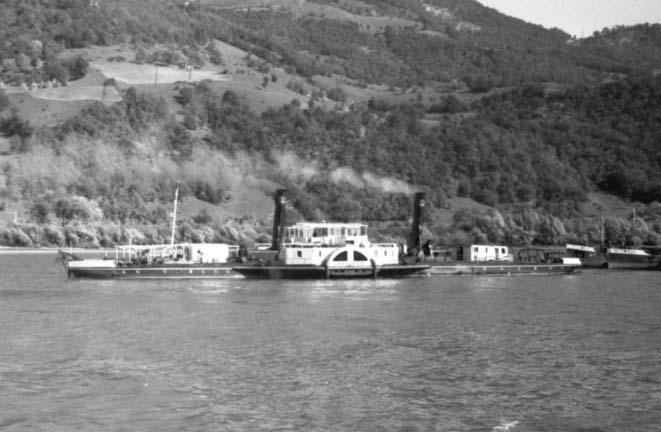
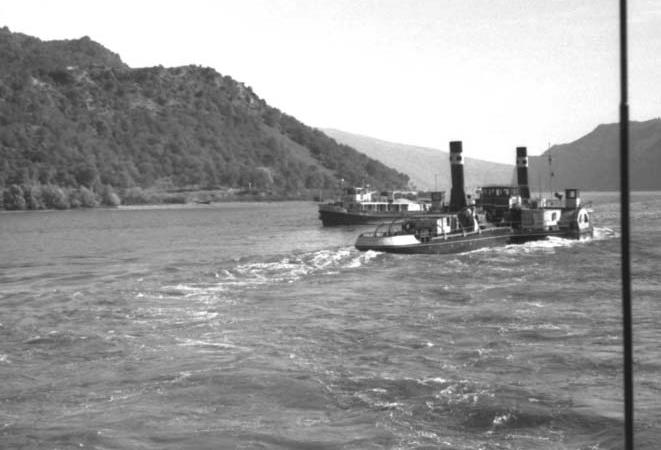
Danube
The steam tug "Harkov" was built by original Soviet drawings during an era of the Óbuda Shipyard when Soviets owned it. She is one of the boats being built as war reparation. One of her sister ships burned out in the yard during building, the customer didn't accept it and so it remained in our country as the tugboat "Bakony".
351


Canned roaddust
Well, it was a special equipment! Originally a steam tug-boat herself, called “Vaskapu” (Iron Gate), the tug has been equipped with an enormous chain through-winch. An anchor chain of an extreme size had been laid down on the bottom of the river and, as the chain-tug operated its winch, she moved up or down in the bottleneck shipping route. The chain simply went up her deck, through the winch and back again to the bottom. But it gave a high boost to help vessels go upwards against the current.
Drenkova, Izlas, both are names river-men recognised at once even aroused from sleep. Today they are only memories, or they are of no interest.
352
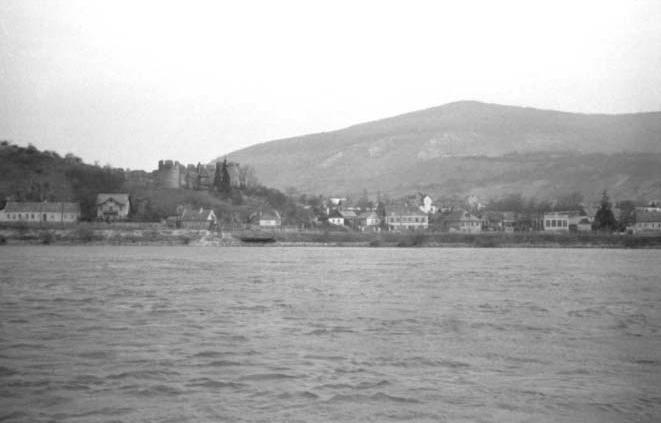
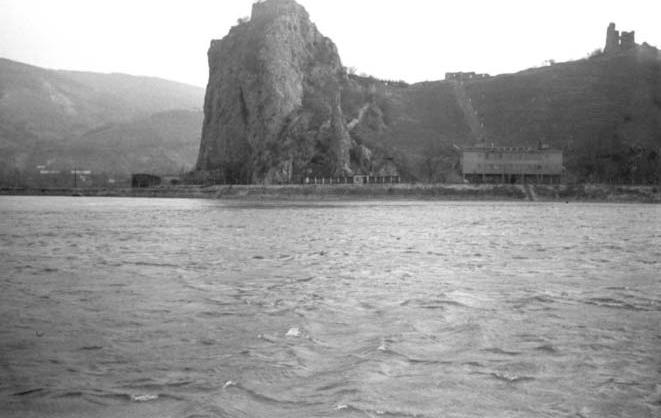
Danube
The border between Austria and Czechoslovakia (today Slovakia) on the left side.
It almost coincides with the ruin of the Devin castle, at the mouth of the Morava.
On the Austrian section of the Upper Danube the country was indescribably pretty with hills resembling the western part of Hungary, and with tidy cottages on both sides. Everything was easy to see as the river was at most a thousand feet wide. Perhaps the most beautiful sight was Wallsee, several boatmen
likened it to the Lorelei cliff on the river Rhine.
353
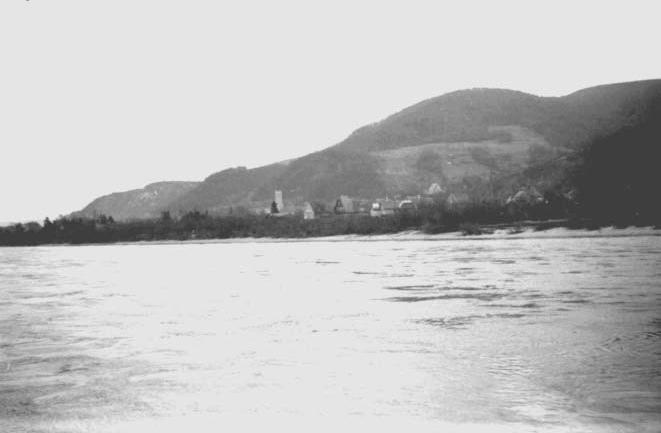
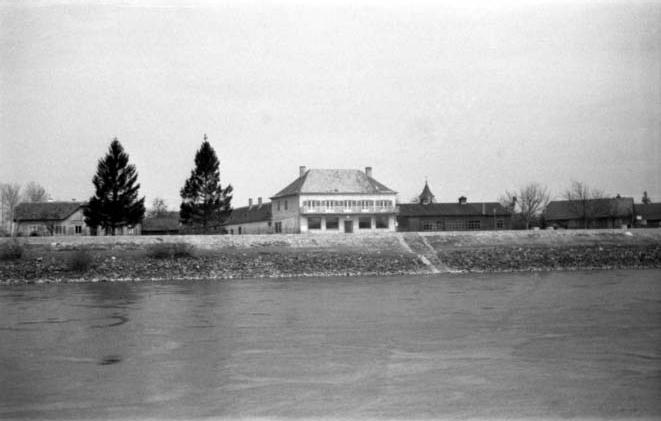
Canned roaddust
On the right shore we could see other spectacles too. The Mauthausen camp existed in the same state as when it was emptied at the end of the war.
In Austria the country was indescribably pretty with hills like the western part of Hungary, and with tidy cottages on both sides. Everything was easy to see as the river was at most a thousand feet wide.
354

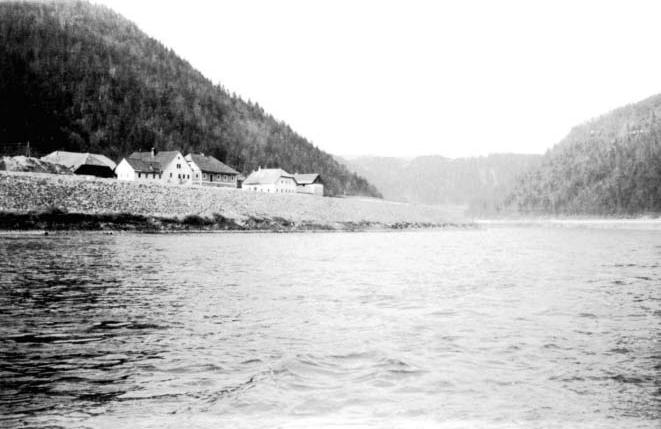
Danube
Waiting for admission into the lock chamber at the Ybbs-Persenbeug dam we could admire the Hapsburg castle in Persenbeug.
Over the town of Linz, boats going upriver reach the hardest section on the upper Danube, this is the alpine section of the river. The steep forested mountain-sides come down to the water's edge, only here and there let they open a small valley.
But there is almost always a settlement there.
355
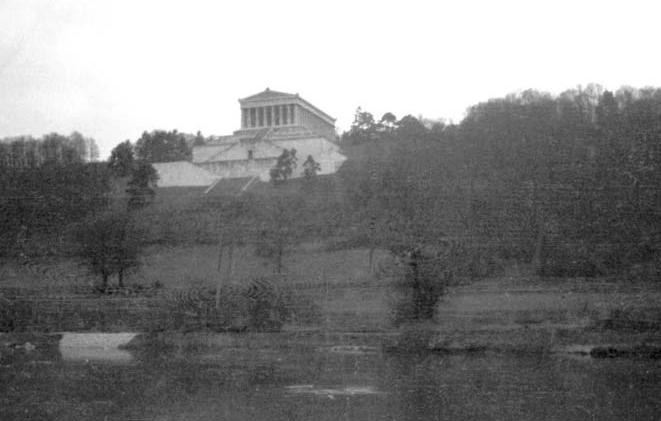
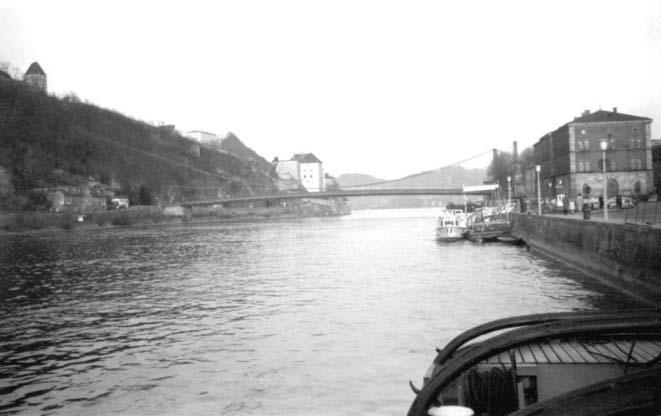
Canned roaddust
Below the town of Regensburg on the left side you see a small hill crowned by a neo-classical collonade. It is the Walhalla, exhibition place of
all the great Germans.
There are a multitude of bridges on all the three streams in Passau, the finest one spanning over the Danube. On the right side it has an ordinary head, but on the left the flow of vehicles is disappearing in a tunnel through the hill coming to the water's edge. The cables are fixed high in the cliffs of the hill.
356
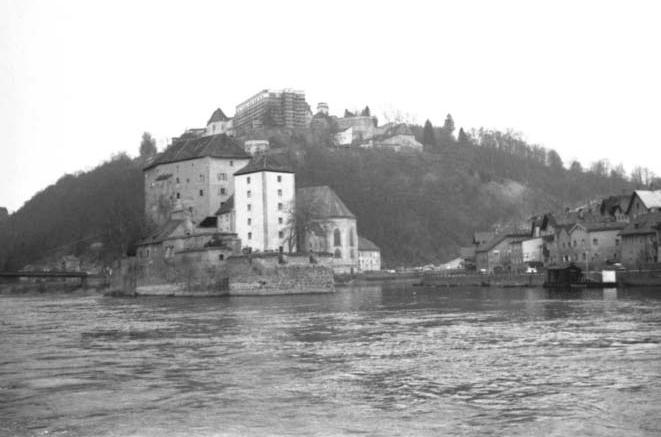
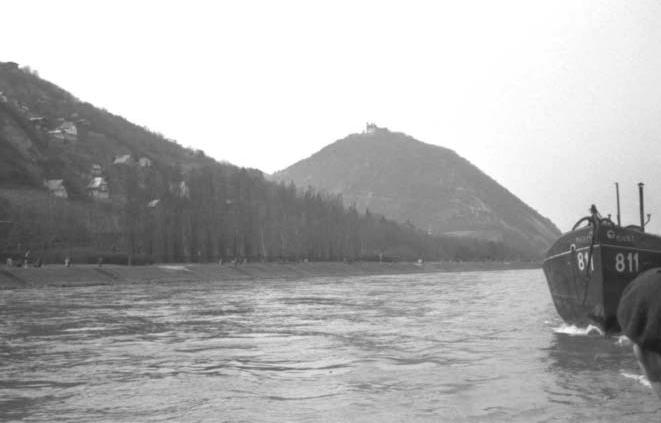
Danube
Passau is the most beautiful town on the upper Danube. Two side-streams are running into the river, the one on the right bank is the Inn, the river of Innsbruck.
The upper Danube is completely different from its lower stretch.
357
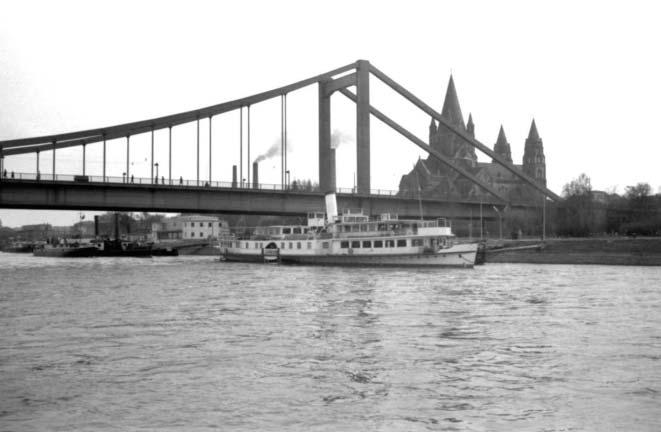

Canned roaddust
In Vienna, there was a very fine suspension bridge over the Danube on the route directly to the centre of the city. It was called Reichsbrücke, renamed Red Army Bridge in favour of the Soviets stationing there until 1955. Anyway, it had the fate of getting back its name, as the Budapest objects with similar names after 1990.
Even worse, but is in no connection with it. During the 70s it broke down while being renovated. No trace of it today.
Pozsony (Bratislava) with the unique castle. As it can be seen that time there was no bridge yet, today two of them hinder the sight of the castle.
358

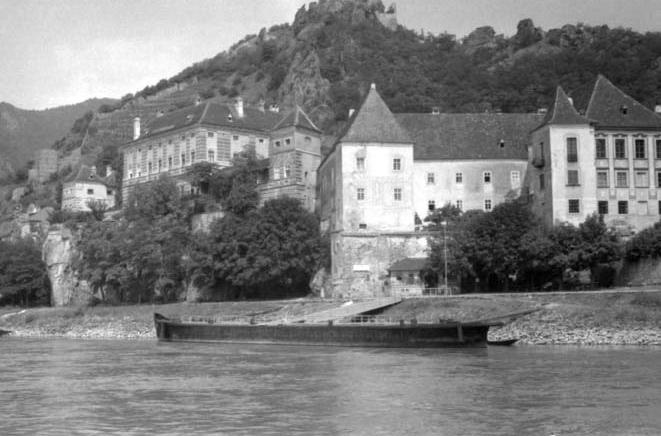
Danube
There are human settlements, but the place is not completely fit for human life.
Tiny town on the peak of a high rock.
359
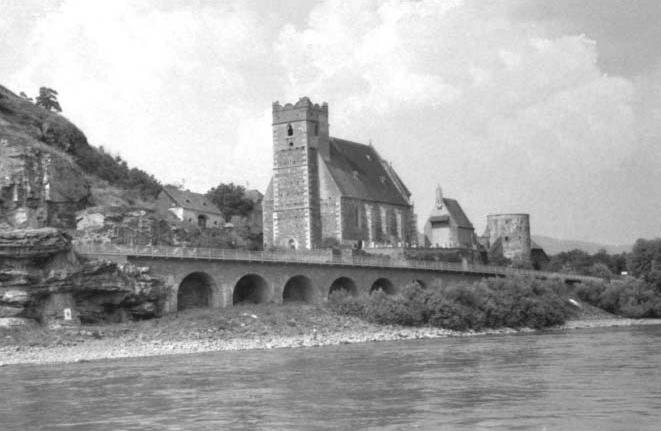
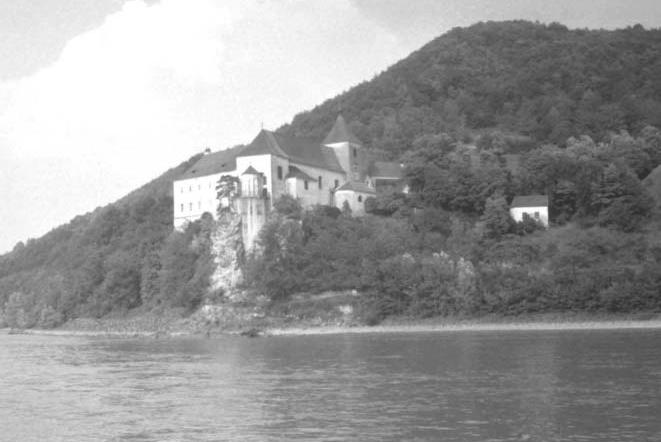
Canned roaddust
One thing is sure: there is no village without pub and church.
The country was very fine, several boatmen likened it to that on the river Rhine.
360
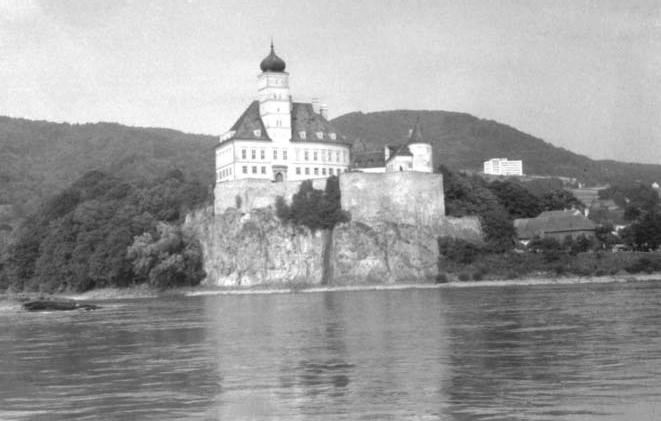
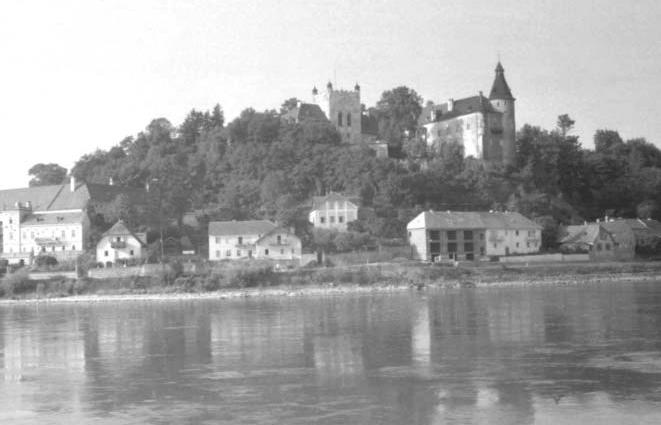
Danube
One of the many picturesque castles on the Danube, I don't know who its owner is. But it catches the eyes of many people as it can be seen in other albums, too.
New buildings are near the river in an easily accessable place, the older ones have been built in a safe height.
361
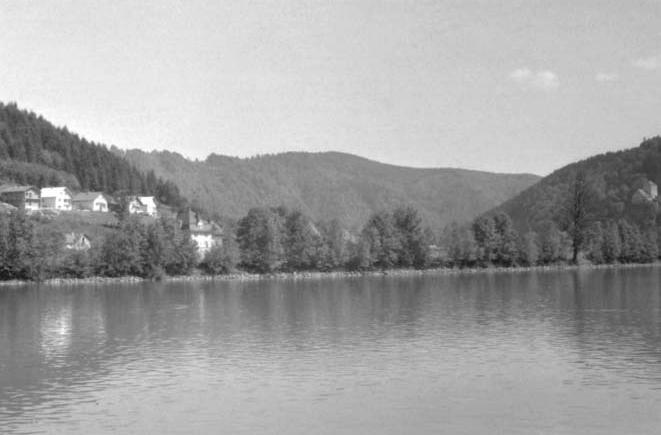
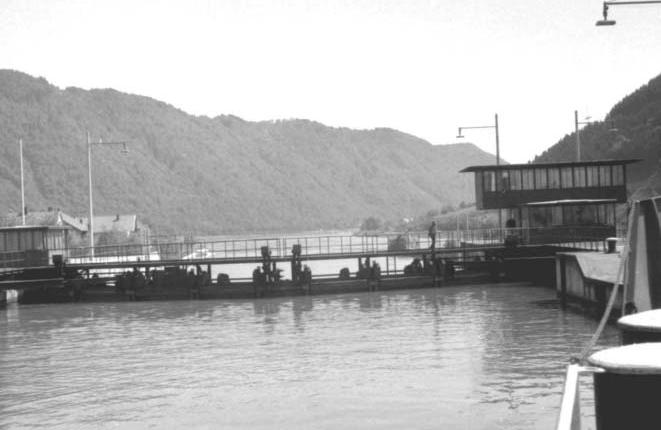
Canned roaddust
At the time I write about, the first dam on the Danube below us was a plan only, but in the Austrian section I have seen the fourth one in construction at Aschach in 1963. I made this photo about it the next year.
362

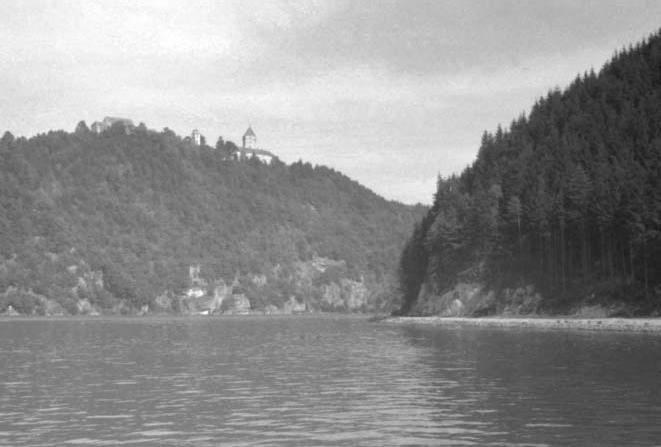
Danube
The steep forested mountain-sides come down to the water's edge.
Only here and there let the steep slopes open a small valley. These drain the snowmelt into the Danube, in some cases they make the mouths of small
tributaries, which is equal with flood during spring. These people are hard, they can live on anything, for this reason you can find the small villages everywhere, not only in the valleys.
363
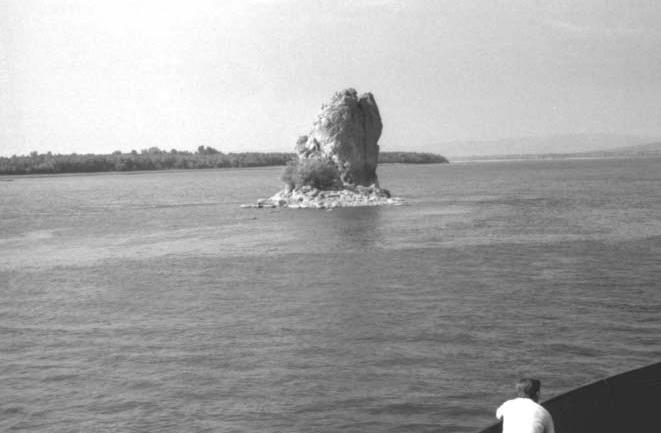

Canned roaddust
Boats steaming down-river quickly got sight of the Babakai rock to the right in the middle of the strong current far from the shore, it has something to do with the usual legend about the fight between the girl separated from her love and her father -- as everywhere in the world --.
On the same side, but of course on the shore, you can see the ruins of Galambóc, a border fortress during the reign of King Matthew, where the king had an affair with Turks (alas, he wasn't very tough with them, otherwise they would not have dared to come to our country in 1526). Here the walls of cliffs begin to rise as you steam downwards.
364
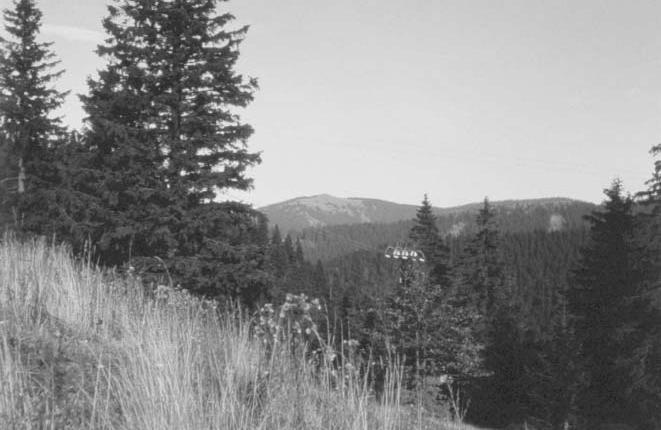
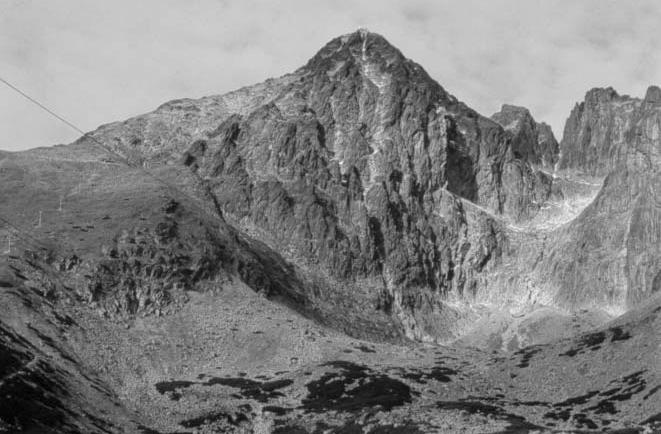
Czech and Slovak country
It was in 1983 that I got to the Northern Carpathian Mountains.
The favourite place of Hungarians visiting former domestic lands is the Tátra in the Carpathian. In fine weather the Lomnic peak even seems steeper than real.
365

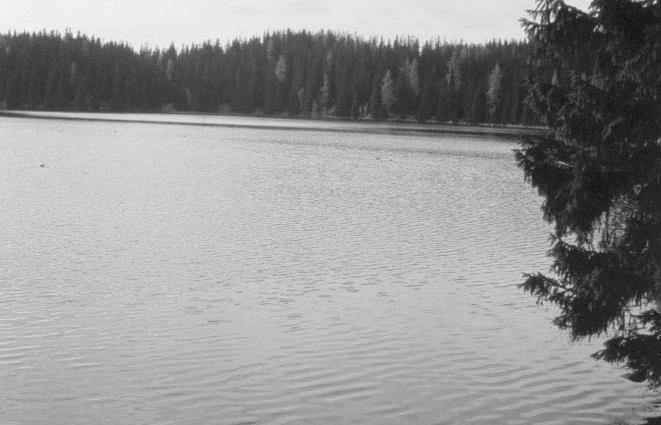
Canned roaddust
Especially gorges are terrifying.
Lake Csorba.
366
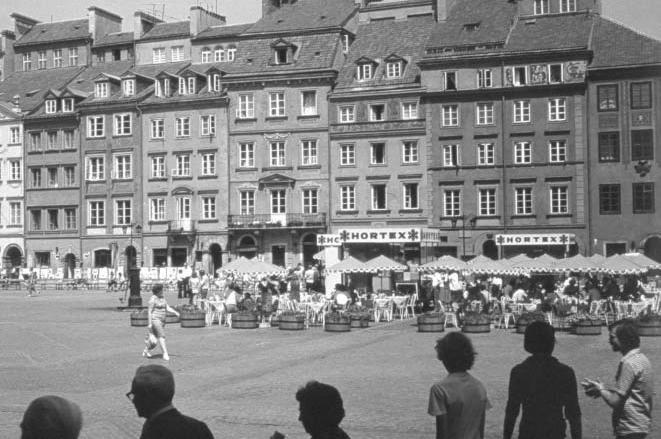
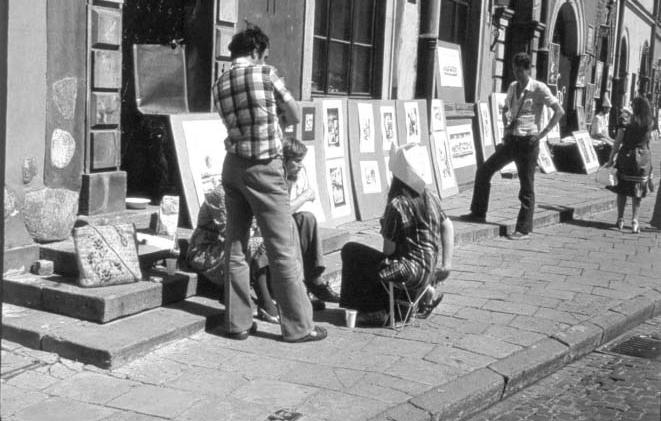
Poland
While spending time at change from air-plane to

































































